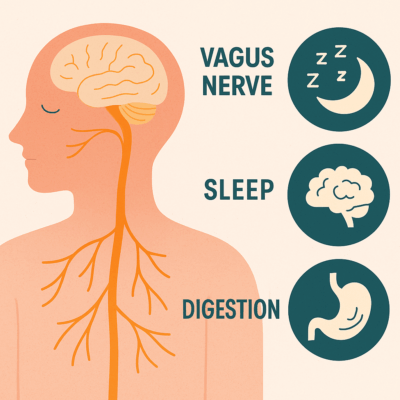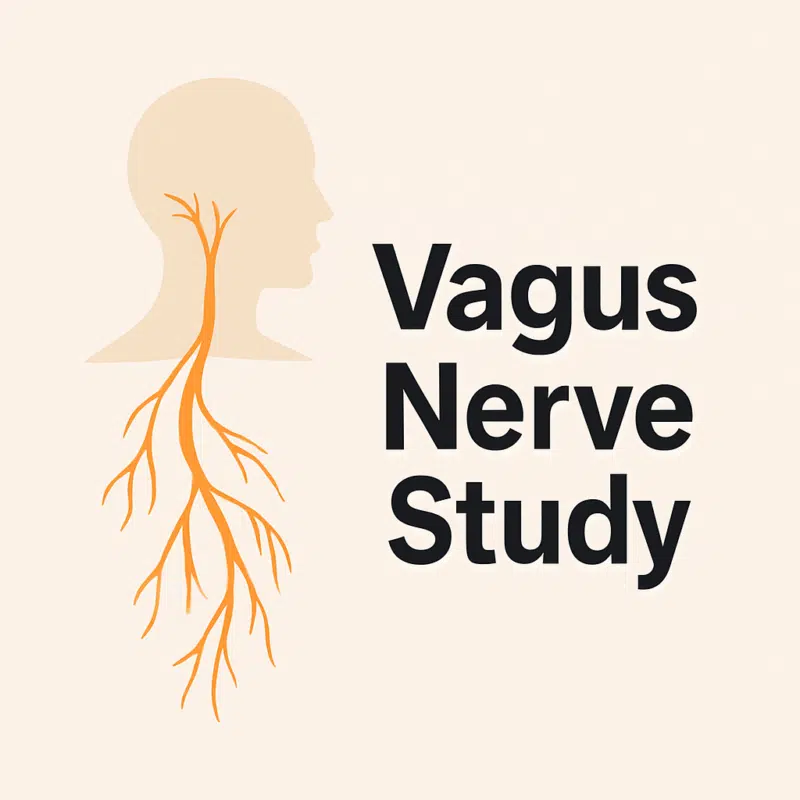
Stress, Sleep, and Digestion – The Vagus Nerve Connection Explained
Stress, Sleep, and Digestion When you feel stressed, your sleep suffers. When you don’t sleep well, your digestion…

The vagus nerve, often referred to as the “superhighway” of the parasympathetic nervous system, plays a vital role in regulating inflammation, heart rate, digestion, and overall emotional balance. As science explores deeper into ways of stimulating this nerve for therapeutic benefits, Pulsed Electromagnetic Field (PEMF) therapy is emerging as a promising, non-invasive tool. What Is […]
The vagus nerve, often referred to as the “superhighway” of the parasympathetic nervous system, plays a vital role in regulating inflammation, heart rate, digestion, and overall emotional balance. As science explores deeper into ways of stimulating this nerve for therapeutic benefits, Pulsed Electromagnetic Field (PEMF) therapy is emerging as a promising, non-invasive tool.
Table of Contents
The vagus nerve is the longest cranial nerve in the body, connecting the brain to major organs like the heart, lungs, and gut. It acts like a communication channel, sending signals back and forth to keep our internal systems in check.
When functioning properly, the vagus nerve helps:
Lower stress and cortisol levels
Reduce inflammation
Promote calmness and emotional regulation
Improve digestion and gut-brain communication
Enhance heart rate variability (HRV)
PEMF therapy uses low-frequency electromagnetic fields to stimulate cell activity and nervous system function. Recent studies suggest that PEMF may enhance vagal tone—essentially improving the performance of the vagus nerve.
By targeting the autonomic nervous system, PEMF can:
Increase parasympathetic (rest and digest) activity
Decrease sympathetic (fight or flight) dominance
Support long-term stress resilience
Improve HRV — a key marker of vagus nerve health
We’re proud to share our recent research published in the Journal of Electromagnetic Biology and Medicine: 📄 Read Full Study
The study explores the effects of PEMF on the vagus nerve through measurable changes in HRV and subjective relaxation scores. Our findings revealed:
A significant increase in HRV after just one session
Decreased self-reported anxiety levels
Evidence of enhanced vagal activation with regular PEMF use
These results support the hypothesis that PEMF is a viable, drug-free method for supporting vagus nerve function and autonomic balance.
A double-blind, placebo-controlled study involving 485 participants explored the impact of pulsed electromagnetic field (PEMF) therapy on vagus nerve stimulation through non-invasive neck applications. The research compared various frequencies (6 Hz, 16 Hz, and 32 Hz) and found that PEMF, particularly at 16 Hz, significantly improved sleep quality and reduced anxiety levels. These results highlight PEMF’s potential as a powerful, non-pharmacological solution for regulating autonomic nervous system function and addressing stress-related disorders.
Improving vagus nerve function has wide-reaching health implications — from emotional stability and immune response to recovery and resilience. With PEMF, users may benefit from:
Better sleep and recovery
Lower stress reactivity
Enhanced focus and emotional clarity
A natural sense of calm
If you’re curious about the vagus nerve, stress resilience, or PEMF therapy, we invite you to dive deeper:
👉 Explore our research
👉 Visit neopemf.com/research for more studies
———————